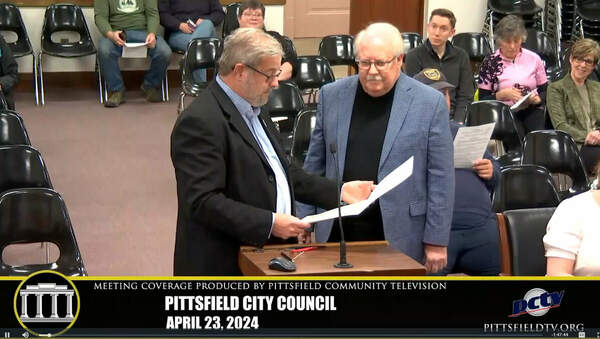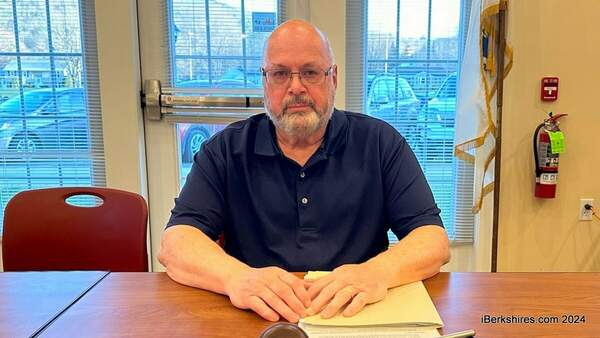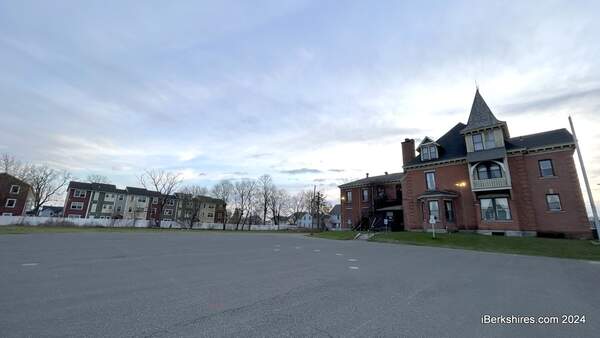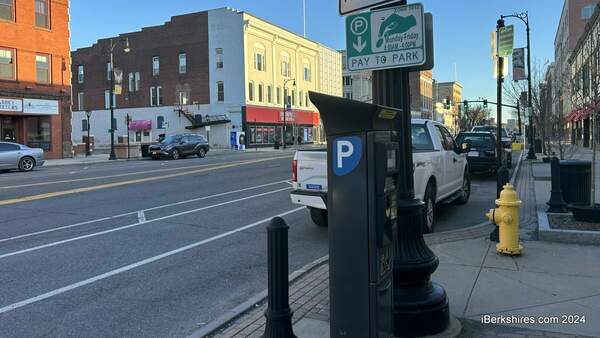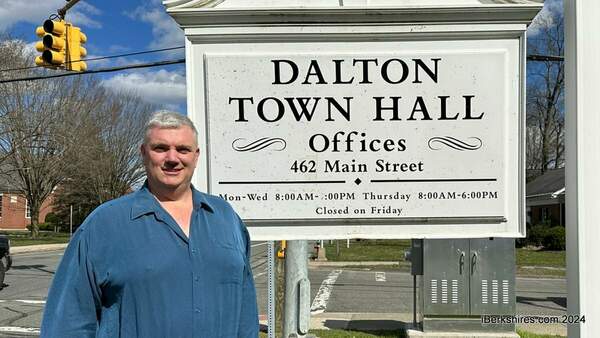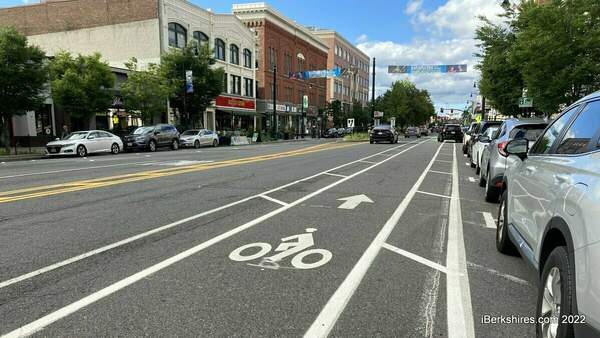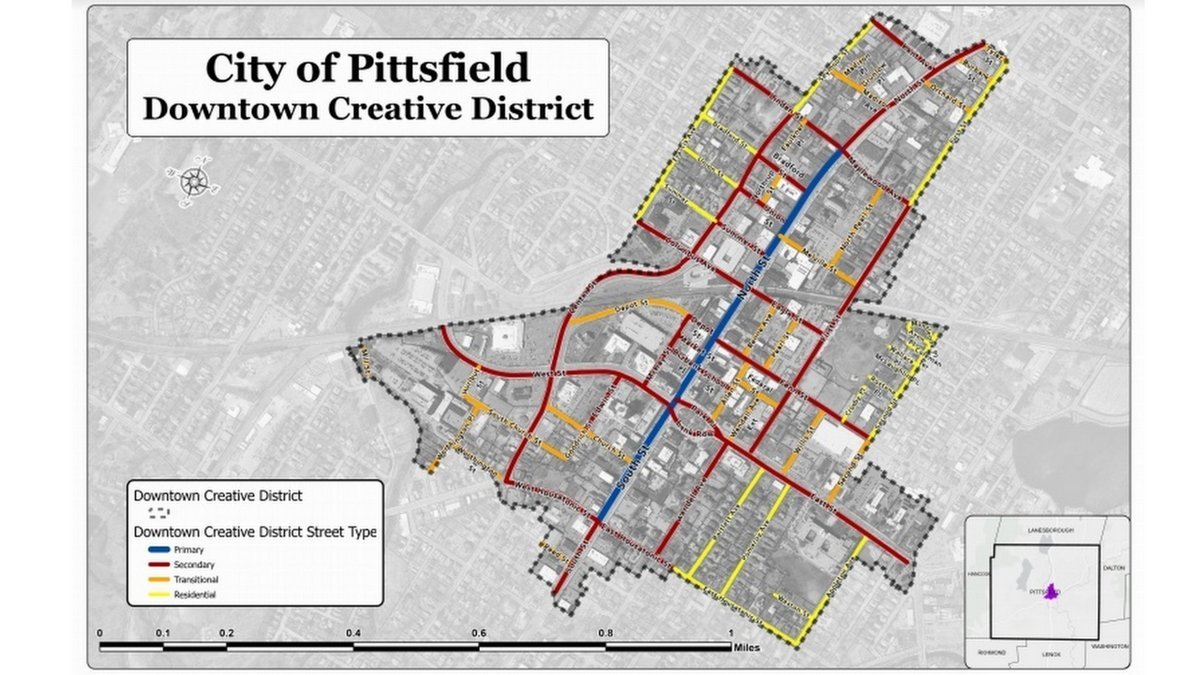
Pittsfield Community Development Sends Creative District Zoning to Council
PITTSFIELD, Mass. — City planners are supporting a zoning district amendment that would highlight the historical design elements of downtown Pittsfield and encourage a mixture of uses to drive creatives and foot traffic to the area.
After a public hearing, the Community Development Board on Tuesday voted to send its own petition to the City Council that would create a new creative district in the downtown.
"The purpose of this zoning is to really support what we view is the urban fabric that's in place in the downtown area," City Planner CJ Hoss said. "And that means just generally that historic land use pattern, especially the larger buildings that have been here for at least the better part of a century if not longer and had really contributed to more of a mixed-use environment versus some of the development that we've seen in the last 30, 40, 50 years."
The petition will be referred back to the City Council that will hold a public hearing and likely facilitate a subcommittee review. Once the zoning ordinance is approved, only new developments will be subject to discernment and any existing properties will not be affected.
The board has grappled with this zoning ordinance over the past couple of years, having it presented to them twice before. It began in 2018 as a workshop in tFramework co-working space on North Street, Hoss explained, that was open for a "good chunk" of a day so that people could drop in and give input.
"This is kind of the ultimate result of probably two and a half years' work," Chairwoman Sheila Irvin said. "And so it's it's exciting to see it come together like this."
Hoss said the meat of the ordinance's development began from 2018 to 2019 with multiple public meetings and was guided by a steering committee that consisted of a range of downtown stakeholders, property owners, business owners, and downtown building realtors.
The project's goals are to develop new zoning that will support a vibrant, mixed-use, pedestrian-friendly urban downtown, determine the best way for the city of Pittsfield through its land-use boards to control the appearance of future development in the downtown, and replace existing overlay and underlying districts with a form-based code.
A form-based code is the reconfiguration of the rules for development with a focus on creating physically integrated and coordinated development patterns for large areas. It shapes relationships among private redevelopment, public space, facilities, and infrastructure, creates a texture in the physical fabric of communities, introduces urban design, architecture, and landscape architecture into land-use regulations to increase value, and facilitates diverse and mixed uses.
Hoss explained that the existing district that was created around 2004 triggered a permit process that has been "unnecessary" because the proposed projects have generally been supported by the city's Master Plan.
This zoning outlines the historic, intact buildings of North and South Street and uses them as positives to build around. It also addresses the lack of ground-floor activity in the downtown and the general uses of space that are not attracting foot traffic and considers how to emphasize and incentivize the area, making it desirable for businesses, retail, restaurants, and creative ventures rather than creating "dead zones" in the area.
Hoss explained that downtown streets can be identified as primary, secondary, transitional, and residential streets based on use. The span of South Street from east to west up to Park Square, and North Street going north to Maplewood Avenue were defined as the primary corridor that would see the aforementioned regulations.
"The context for understanding are sort of four zones within this area," Hoss said. "It's really meant to illustrate not that we expect development to look like this, but generally the scale of what we're looking for, some of the key design concepts we're looking for. So along the primary front end, for example, buildings are required to least be three stories but they can be from three to six stories. So trying to get away from single-use, single-occupant, one store uses along that primary corridor."
A lot of the project focuses on looking at existing buildings and trying to identify design components that are viewed as being positive things that can be emulated elsewhere versus what the city doesn't want to see happen.
"A lot of what we've seen in the last 15 years in the use of the downtown arts overlay district is it's given us the opportunity to talk about design treatment, talk about how spaces are going to be used, whether they're historic buildings or new construction, but a lot of the time, those are discussions that could just be had more of a basic level, they don't require public hearings, they don't necessarily require multiple meetings of a Community Development Board and the City Council and other land use boards," Hoss said, adding the intent to create a permitting process that allows for streamlined effort.
Over the course of its existence, the zoning ordinance has been amended and on Tuesday, the Board adopted an amendment based on a request from Lee Bank stating that "drive-thru windows are prohibited in this district except for buildings with principal frontage on a secondary street that contain a banking use."
Lee Bank is under a purchase and sale agreement to buy a parcel at the corner of Reed and South St., where they plan to install a drive-thru window. The amendment will afford the opportunity to have the bank be able to continue to submit a special permit application for a drive-thru.
Tags: zoning,

